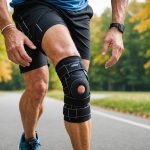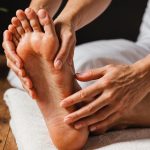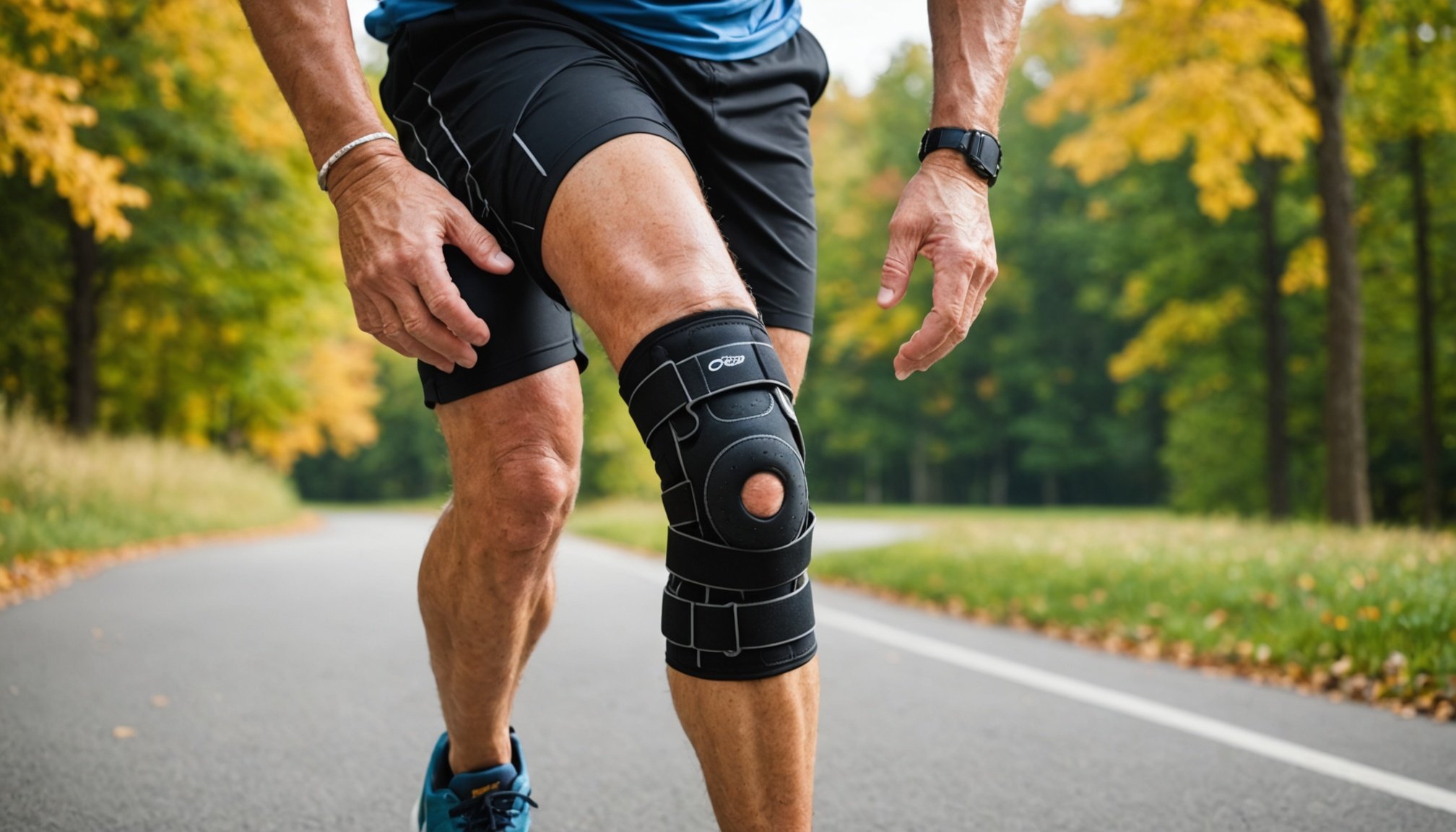Exploring the Benefits and Drawbacks of Knee Braces for Seniors Suffering from Osteoarthritis
For many seniors, osteoarthritis (OA) of the knee is a debilitating condition that can significantly impact daily life. One common solution that has gained popularity is the use of knee braces. These devices can offer substantial support and relief, but they also come with their own set of advantages and disadvantages. In this article, we will delve into the benefits and drawbacks of knee braces for seniors suffering from osteoarthritis.
Understanding Knee Osteoarthritis
Before we dive into the specifics of knee braces, it’s essential to understand what osteoarthritis is and how it affects the knee joint. Osteoarthritis is a degenerative joint disease characterized by the wear and tear of the cartilage that cushions the joints. In the knee, this can lead to bone-on-bone contact, causing severe pain, stiffness, and limited mobility.
Additional reading : Discover the Cutting-Edge Hearing Technologies Transforming Life for Seniors Aged 75 and Up
| Symptoms of Knee Osteoarthritis |
|
|
| Pain in the knee joint |
| Stiffness, especially after rest |
| Limited mobility |
| Swelling and redness |
| Clicking or grinding sensations |
| Instability in the knee |
Benefits of Knee Braces for Osteoarthritis
Knee braces can be a valuable tool for managing osteoarthritis, offering several key benefits:
Support and Stability
Knee braces provide additional support and stability to the knee joint, which can be particularly beneficial for individuals with osteoarthritis. By stabilizing the knee, these braces help reduce strain on the injured areas and promote proper alignment, thereby alleviating some of the pain and discomfort associated with OA.
Also to read : Exploring Cutting-Edge Innovations in Remote Health Monitoring for Seniors
Pain Relief
One of the most significant advantages of knee braces is their ability to provide pain relief. By redistributing the weight and pressure away from the most affected areas of the knee, these braces can help lighten the load and reduce pain. For example, unloader knee braces are specifically designed to shift the weight from the damaged side of the knee to the healthier side, providing significant relief for patients with OA.
Enhanced Mobility
Knee braces can also enhance mobility by providing the necessary support and stability that allows individuals to engage in physical activities that might otherwise be too painful. This is crucial because maintaining physical activity is essential for overall health and can help slow down the progression of osteoarthritis.
| Types of Knee Braces and Their Benefits |
|
|
| **Unloader Braces** |
| - Shift weight from damaged to healthier side of the knee |
| - Provide significant pain relief |
| **Neoprene Braces** |
| - Offer compression and warmth to the knee joint |
| - Provide general support and stability |
| **Patella Braces** |
| - Support the patella (kneecap) and help with tracking issues |
| - Reduce pain and discomfort associated with patella misalignment |
Drawbacks of Knee Braces
While knee braces can be highly beneficial, they also have some drawbacks that need to be considered:
Muscle Atrophy
Prolonged use of knee braces, especially unloader braces, can lead to muscle atrophy due to reduced muscle engagement. This is because the brace takes over some of the functions of the muscles, leading to a decrease in muscle strength and endurance over time.
Dependency Risk
There is a risk of dependency on knee braces, which can hinder the natural healing process and muscle strengthening. Patients may rely too heavily on the brace and avoid exercises that could help strengthen the muscles around the knee joint.
Comfort and Fit Issues
Some knee braces can be uncomfortable to wear, especially if they do not fit properly. Issues such as rolling down, bunching up, or causing pressure points can be common complaints. For instance, some users of the copper knee brace have reported that it tends to roll down, causing uncomfortable pressure.
Cost and Accessibility
Knee braces can vary significantly in price, and some high-quality options may be out of reach for many seniors. Additionally, accessing the right type of brace can be challenging, especially for those living in remote areas or with limited mobility.
Choosing the Right Knee Brace
Selecting the appropriate knee brace is crucial for maximizing its benefits while minimizing its drawbacks. Here are some tips to help you choose the right knee brace:
Consult a Healthcare Professional
Before purchasing a knee brace, it is advisable to consult with a healthcare professional, such as an orthopedic specialist or a physical therapist. They can recommend the most suitable type of brace based on your specific condition and needs.
Consider Your Lifestyle
Think about your daily activities and the level of support you need. For example, if you are active and engage in sports, you might need a more robust brace designed for running or high-impact activities.
Read Reviews and Testimonials
Look at reviews from other users to get an idea of the comfort, functionality, and support provided by the brace. For instance, many users of the copper knee brace have praised its comfort and support, but some have noted issues with rollability.
Practical Tips for Using Knee Braces
Here are some practical tips to make the most out of your knee brace:
Wear It Correctly
Ensure you wear the brace as instructed. Proper fitting is crucial to avoid discomfort and ensure the brace functions as intended.
Combine with Exercise
Use the knee brace in conjunction with a regular exercise routine. This can help strengthen the muscles around the knee joint and improve overall mobility.
Monitor Your Progress
Keep track of how the brace affects your pain levels and mobility. Adjust or change the brace as needed based on your feedback.
| Tips for Using Knee Braces Effectively |
|
|
| **Wear it correctly** |
| - Follow the manufacturer's instructions |
| - Ensure proper fit to avoid discomfort |
| **Combine with exercise** |
| - Engage in regular physical activity to strengthen muscles |
| - Use exercises specifically designed for knee health |
| **Monitor your progress** |
| - Keep a journal to track pain levels and mobility |
| - Adjust or change the brace based on your feedback |
Real-Life Examples and Anecdotes
To illustrate the real-world impact of knee braces, let’s look at a few examples:
Case Study: Using an Unloader Brace
A 65-year-old woman with severe osteoarthritis in her left knee found significant relief using an unloader brace. She reported a reduction in pain and an increase in her ability to walk without assistance. However, she also noted that she had to be careful not to rely too heavily on the brace, ensuring she continued with her physical therapy exercises to maintain muscle strength.
User Testimonial: Copper Knee Brace
A user of the copper knee brace shared, “I was able to order a size that fit my needs perfectly. It’s comfortable and easy to get on and off without any problems. It helps give support without squeezing too much, and it’s not too tight, which gives me the ability to bend my knee easily.”
Knee braces can be a valuable tool for seniors suffering from osteoarthritis, offering significant support, stability, and pain relief. However, it is crucial to be aware of the potential drawbacks, such as muscle atrophy and dependency risk. By choosing the right brace, wearing it correctly, and combining it with a regular exercise routine, seniors can maximize the benefits of knee braces while maintaining their overall health and mobility.
In the words of a physical therapist, “Knee braces are not a replacement for physical therapy and self-care, but they can be a powerful adjunct to your treatment plan. The key is to use them wisely and as part of a comprehensive approach to managing osteoarthritis.”
By understanding the benefits and drawbacks of knee braces and incorporating them into a holistic care plan, seniors can better manage their osteoarthritis and improve their quality of life.











